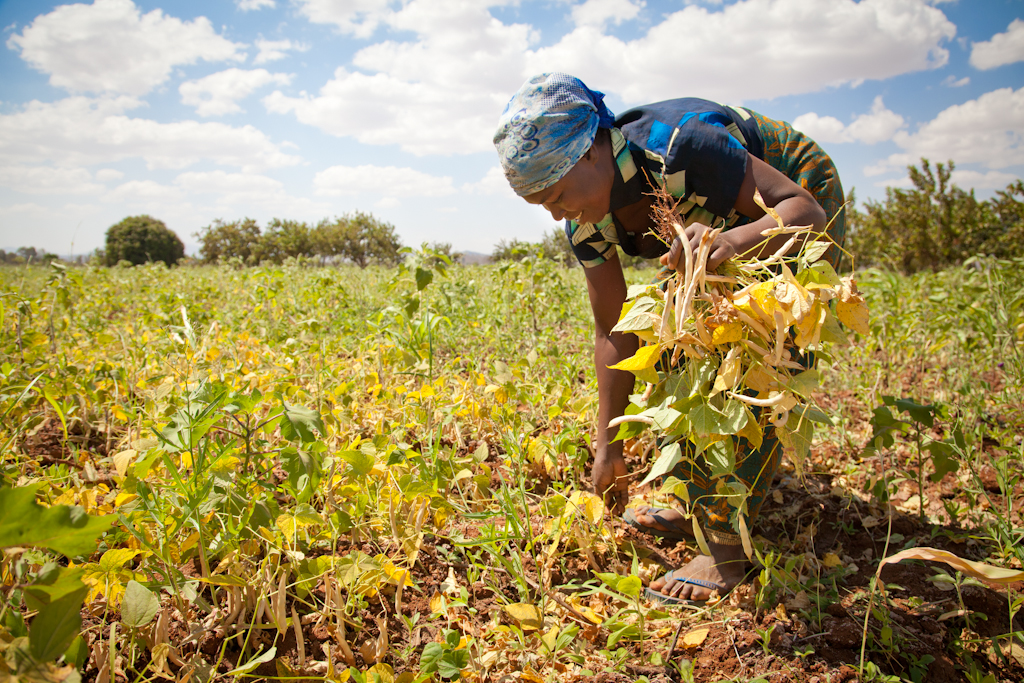New FAO publications focus on benefits of Purchase for Progress

In a new series of publications, FAO examines the benefits and costs of Purchase for Progress (P4P) − an initiative designed to help low-income smallholder farmers produce more high-quality food and gain a foothold in the market.
Launched by the World Food Programme (WFP) in 2008, P4P links WFP's demand for staple foods with the technical expertise of partners working to strengthen farmers' capacity to boost production, reduce post-harvest losses, access credit and secure a fair price for their goods.
Digging deeper
At WFP's request, FAO conducted an investment analysis of P4P activities in four countries − El Salvador, Malawi, Mali and Tanzania. The studies were limited and focused, combining quantitative data with qualitative field research.
"P4P was the first time WFP had done large-scale institutional procurement with smallholder farmers", said Roble Sabrie, an FAO economist and one of the authors of the Tanzania and Mali studies. "They wanted to know more than just how much food they had purchased or how much the farmers were paid under this new scheme".
"With this analysis, we were looking at whether institutional procurement from smallholders works well or not, what the challenges are, what the minimum needed from smallholders is, whether it could be applied to other crops farmers are producing and so on", said Roble.
Spill-over effects
The teams reviewed official procurement data and secondary information, including monitoring and evaluation reports, financial service group records, logistics and capacity development costs.
They developed financial models to provide further insight into the profitability, benefits and sustainability of P4P activities and procurement.
Information gleaned from interviews and discussions with WFP country officers, farmers, service providers and market traders helped shed light on the perceived risks, constraints and benefits.
"It was very interesting talking with the farmers", said Roble. "As an economist you think, okay they're better off because they had a market and received higher prices, which was true, but the people we talked to perceived a lot of other benefits, like capacity building, that they felt were even more important".
In Tanzania, for example, farmers used to sell their food by bags, rather than by weight − making it easier to be cheated by middlemen. But through P4P, they learned to weigh and grade the quality of their produce properly, helping them to receive higher prices. It's a practice they now do with all of their crops, not just the ones under P4P.
And in Mali, P4P has helped farmers plan better. Rather than selling everything at once, only to have to buy it back later at a higher price, farmers are now setting aside a certain amount to cover household food needs and then selling the rest in the market.
And that capacity will remain in the country, said Roble: "I think the legacy of this programme is that it has really changed the mindsets of those farmers, making them more commercially oriented".
Learning and sharing
As WFP scales up and strengthens the approach, said Edouard Nizeyimana, WFP's P4P senior programme advisor, the data from these analyses "will prove invaluable".
"P4P has emphasized learning and sharing to enable us to improve implementation and ensure that our work is benefiting smallholder farmers and agricultural markets to achieve improved food security and nutrition", he said. "I would like to extend our thanks to FAO for their support in deepening our understanding of the costs and benefits of institutional procurement".
A more complete picture
These investment analyses complement other P4P case studies carried out by FAO's Rural Infrastructure and Agro-industry Division, and are contributing to a global analysis on institutional procurement, said Siobhan Kelly, an agribusiness officer and FAO's P4P focal point.
"There's a lot of learning on how public demand for food can be instrumental in raising the overall agricultural market for food commodities, and in raising the bar for suppliers," she said. "It not only increases the quality of the supply going to the immediate buyer, such as WFP, but to the rest of the market".
"It's also interesting to see how public demand for food can be an instrument for development and economic growth", she said. "There's a lot of interest from governments on this, and it's a valuable contribution to be able to support them to reflect on the changes they need to introduce in order for these types of programmes to contribute to their own economic and development goals".
In addition to Roble Sabrie, the FAO team included economists Luis DiasPereira, Wadzi Katsande and Lisa Paglietti, and Alexander Jones, former senior programme officer.
Photo credit WFP/Jennifer Kunz
